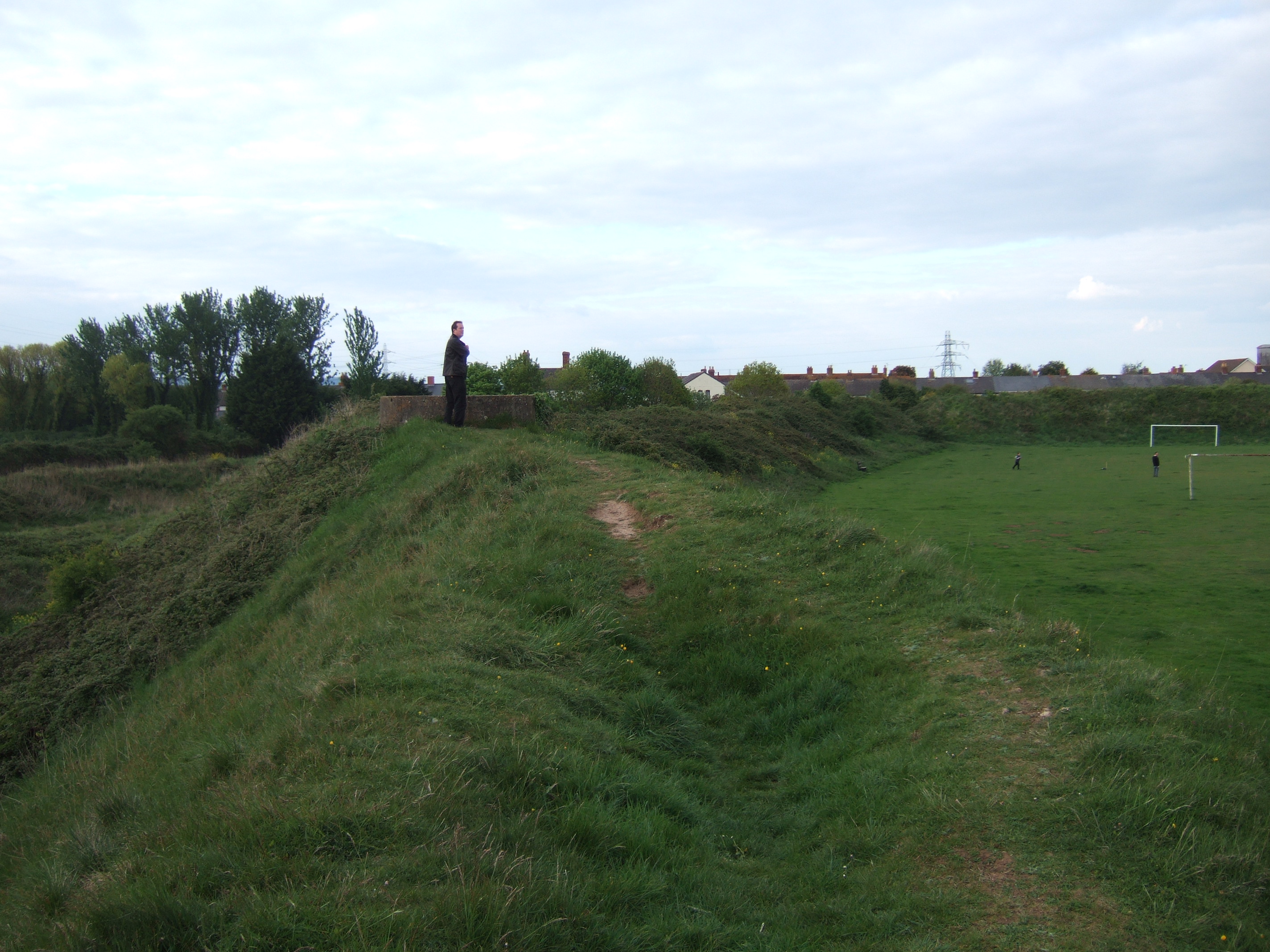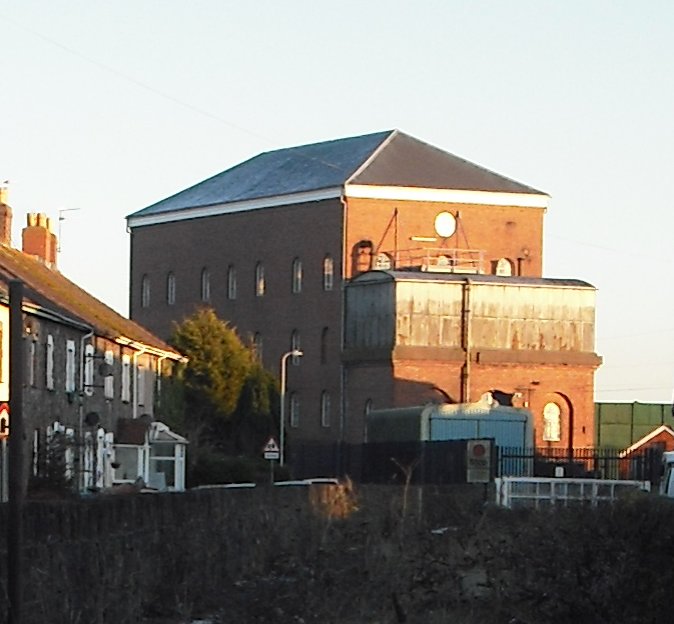Sudbrook, Monmouthshire on:
[Wikipedia]
[Google]
[Amazon]
Sudbrook is a village in Monmouthshire,


/ref> It is believed that in the 1870s cricket was played at Black Rock, where
The club achieved league status in the 1970s, and currently plays in Division One of the Glamorgan and Monmouthshire Cricket League.Glamorgan and Monmouthshire Cricket League
Sudbrook Info - history etc
Geograph photos of the area
{{authority control Villages in Monmouthshire Populated places on the River Severn
south east Wales
South East Wales is a loosely defined region of Wales generally corresponding to the preserved counties of Mid Glamorgan, South Glamorgan and Gwent. Highly urbanised, it includes the cities of Cardiff and Newport as well as large towns in th ...
. It is located 4 miles south west of Chepstow
Chepstow ( cy, Cas-gwent) is a town and community in Monmouthshire, Wales, adjoining the border with Gloucestershire, England. It is located on the tidal River Wye, about above its confluence with the River Severn, and adjoining the wester ...
and 1 mile east of Caldicot. It lies close to the Second Severn Crossing
or cy, Pont Tywysog Cymru, label=none, italic=unset
, carries = M4 motorway (6 lanes)
, crosses = River Severn
, locale = South West England / South East Wales
, maint = National Highways
, architect ...
on the Severn Estuary
The Severn Estuary ( cy, Aber Hafren) is the estuary of the River Severn, flowing into the Bristol Channel between South West England and South Wales. Its high tidal range, approximately , means that it has been at the centre of discussions in t ...
, and adjoins the village of Portskewett. It was largely built in the late 19th century for workers on the Severn railway tunnel. At that time it was also known as Southbrook.
History

Sudbrook hill fort
Sudbrook was of early historic importance in guarding theSevern estuary
The Severn Estuary ( cy, Aber Hafren) is the estuary of the River Severn, flowing into the Bristol Channel between South West England and South Wales. Its high tidal range, approximately , means that it has been at the centre of discussions in t ...
at an ancient ferry crossing place. An Iron Age
The Iron Age is the final epoch of the three-age division of the prehistory and protohistory of humanity. It was preceded by the Stone Age ( Paleolithic, Mesolithic, Neolithic) and the Bronze Age ( Chalcolithic). The concept has been mostl ...
hillfort
A hillfort is a type of earthwork used as a fortified refuge or defended settlement, located to exploit a rise in elevation for defensive advantage. They are typically European and of the Bronze Age or Iron Age. Some were used in the post-Roma ...
is located on the coast, probably built and occupied by the Silures from the 2nd century BC and occupied by the Romans
Roman or Romans most often refers to:
*Rome, the capital city of Italy
* Ancient Rome, Roman civilization from 8th century BC to 5th century AD
*Roman people, the people of ancient Rome
*''Epistle to the Romans'', shortened to ''Romans'', a lette ...
from the 1st century AD until the 4th century. The hillfort was originally much bigger than now having been eroded over the centuries. Finds of Roman coins
Roman currency for most of Roman history consisted of gold, silver, bronze, orichalcum and copper coinage. From its introduction to the Republic, during the third century BC, well into Imperial times, Roman currency saw many changes in form, denom ...
at Black Rock, Portskewett, show that the ferry crossing was in use in Roman times, on the route between the Roman stations of ''Aquae Sulis
Aquae Sulis (Latin for ''Waters of Sulis'') was a small town in the Roman province of Britannia. Today it is the English city of Bath, Somerset. The Antonine Itinerary register of Roman roads lists the town as ''Aquis Sulis.'' Ptolemy records t ...
'' ( Bath) and ''Venta Silurum
Venta Silurum was a town in the Roman province of ''Britannia'' or Britain. Today it consists of remains in the village of Caerwent in Monmouthshire, south east Wales. Much of it has been archaeologically excavated and is on display to the publ ...
'' (Caerwent
Caerwent ( cy, Caer-went) is a village and community in Monmouthshire, Wales. It is located about five miles west of Chepstow and 11 miles east of Newport. It was founded by the Romans as the market town of ''Venta Silurum'', an important sett ...
).
According to tradition, Caradog Freichfras
Caradoc Vreichvras (; Modern cy, Caradog Freichfras, ) was a semi-legendary ancestor to the kings of Gwent. He may have lived during the 5th or 6th century. He is remembered in the Matter of Britain as a Knight of the Round Table, under the ...
, the Welsh ruler of Gwent in the 5th century or 6th century AD, moved his court from Caerwent to the Portskewett area, possibly to the fort.Miranda Aldhouse-Green
Miranda Jane Aldhouse-Green, (''née'' Aldhouse; born 24 July 1947) is a British archaeologist and academic, known for her research on the Iron Age and the Celts. She was Professor of Archaeology at Cardiff University from 2006 to 2013. Unti ...
and Ray Howell (eds.), ''Gwent In Prehistory and Early History: The Gwent County History Vol.1'', 2004,
Holy Trinity Church
The ruined Holy Trinitychurch
Church may refer to:
Religion
* Church (building), a building for Christian religious activities
* Church (congregation), a local congregation of a Christian denomination
* Church service, a formalized period of Christian communal worship
* C ...
stands near the Severn cliff. It has mostly fallen into the sea over the centuries. The nave
The nave () is the central part of a church, stretching from the (normally western) main entrance or rear wall, to the transepts, or in a church without transepts, to the chancel. When a church contains side aisles, as in a basilica-type ...
walls date from the 12th century; the chancel
In church architecture, the chancel is the space around the altar, including the choir and the sanctuary (sometimes called the presbytery), at the liturgical east end of a traditional Christian church building. It may terminate in an apse.
Ov ...
was added in the 14th century and the south porch in the 15th century. The preaching cross
A preaching cross is a Christian cross sometimes surmounting a pulpit, which is erected outdoors to designate a preaching place.
In Britain and Ireland, many free-standing upright crosses – or high crosses – were erected. Some of these c ...
which is now inside the church was originally outside and was probably moved to prevent it falling into the sea as the cliff eroded. The area around the church was probably the site of the original medieval
In the history of Europe, the Middle Ages or medieval period lasted approximately from the late 5th to the late 15th centuries, similar to the post-classical period of global history. It began with the fall of the Western Roman Empire ...
village. A manor house
A manor house was historically the main residence of the lord of the manor. The house formed the administrative centre of a manor in the European feudal system; within its great hall were held the lord's manorial courts, communal meals w ...
and other village buildings stood nearby but later moved inland, probably when climate changes in the 14th and 15th centuries led to the widening of the estuary
An estuary is a partially enclosed coastal body of brackish water with one or more rivers or streams flowing into it, and with a free connection to the open sea. Estuaries form a transition zone between river environments and maritime environm ...
and the erosion of the cliff. By 1720 the church had fallen down and much of the churchyard had fallen into the river with human bones from the graves often being found on the shore.

Sudbrook village and the Severn Tunnel
Most of Sudbrook was built as a new village for workers on theSevern Tunnel
The Severn Tunnel ( cy, Twnnel Hafren) is a railway tunnel in the United Kingdom, linking South Gloucestershire in the west of England to Monmouthshire in south Wales under the estuary of the River Severn. It was constructed by the Great Western ...
, on which construction began in 1873. The first cottages were built by contractor Thomas A. Walker in 1877, and rapid development took place over the next decade, including a school, post office
A post office is a public facility and a retailer that provides mail services, such as accepting letters and parcels, providing post office boxes, and selling postage stamps, packaging, and stationery. Post offices may offer additional ser ...
, mission hall and infirmary. Some of the houses - originally known as Concrete Row - are believed to be the first concrete
Concrete is a composite material composed of fine and coarse aggregate bonded together with a fluid cement (cement paste) that hardens (cures) over time. Concrete is the second-most-used substance in the world after water, and is the most wid ...
houses built in Britain.
Also built was a large pumping station, required to pump water from the tunnel, including three large brick engine houses housing six steam engines, and ventilation towers. The steam engines were replaced by electrical engines in 1962, and the chimney stacks taking smoke from the furnaces were demolished in 1968.
After the Severn Tunnel was opened in 1886, Walker started a shipbuilding business at Sudbrook, using the same labour force. This continued in operation, building steamers of up to 700 tonnes, until 1926.
Between 1958 and 2006, local employment in the village was provided by a large paper mill, which made use of water from the tunnel.
Sudbrook Cricket Club
Sudbrook Cricket Club was formed during the 1860s.Sudbrook community website/ref> It is believed that in the 1870s cricket was played at Black Rock, where
W. G. Grace
William Gilbert Grace (18 July 1848 – 23 October 1915) was an English amateur cricketer who was important in the development of the sport and is widely considered one of its greatest players. He played first-class cricket for a record-equal ...
played against Sudbrook for a Bristol team. The team later played matches within the Iron Age camp, before moving several times, eventually to Caldicot where it remains.Sudbrook Cricket Club league detailsThe club achieved league status in the 1970s, and currently plays in Division One of the Glamorgan and Monmouthshire Cricket League.
Amenities
In 2002 Ysgol y Ffin, one of only twoWelsh language
Welsh ( or ) is a Celtic language of the Brittonic subgroup that is native to the Welsh people. Welsh is spoken natively in Wales, by some in England, and in Y Wladfa (the Welsh colony in Chubut Province, Argentina). Historically, it has ...
based primary school
A primary school (in Ireland, the United Kingdom, Australia, Trinidad and Tobago, Jamaica, and South Africa), junior school (in Australia), elementary school or grade school (in North America and the Philippines) is a school for primary e ...
s in Monmouthshire, was established in the old school building at Sudbrook. However, in 2008 the school outgrew the site and moved to Sandy Lane in Caldicot.
See also
* Portskewett * New PassageFurther reading
*References
External links
Sudbrook Info - history etc
Geograph photos of the area
{{authority control Villages in Monmouthshire Populated places on the River Severn